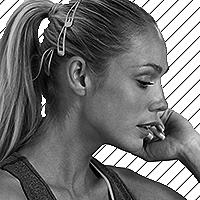
Photo: Abi Carver.
Tight hips are incredibly common for surfers and getting loose is essential if you want to be the best surfer you can be, injury and pain free.
But why do surfers get tight hips? Unfortunately, surfing creates the perfect storm for locked up hips:
-Your hips can get tight from constantly switching your body position from prone to standing.
–Short, tight muscles. Straddling the board puts the hip flexors in a contracted position for long periods of time.
–Weak glutes. As the hip flexors tighten, the opposing muscles—the glutes—respond by relaxing and deactivating, to protect them from tearing.
–Asymmetric alignment. When you’re standing on your board, as your front hip rotates forward, over time it can pull the pelvis, spine, knees and ankles out of alignment.
-Sitting at work, while you’re traveling and when you’re relaxing at home can exacerbate the issue of tight, short hip flexors.
Benefits of stretchy hips
Surfing requires the ability to twist and turn your body with full range of motion, quickly and efficiently. Every single joint needs maximum flexibility and mobility–especially the hips. Loose hips will give you:
-Increased speed and power
-Greater movement efficiency
-Faster pop-up
-Greater agility for turns, jumps and landings
-Improved balance and kinaesthetic awareness
-Increased core strength
-Reduced risk of injury, especially at the low back and knees
-Relief from low back pain
-Increased stamina and endurance
Timing and Frequency
To loosen up and restore full range of motion to your hips, you need to counterbalance your surfing with consistent flexibility and mobility training–little and often. The best times to practice this routine are immediately after surfing, on your day off, or in the evening to help you wind down before bed. This also applies to my other flexibility routines: The Magic of Sidebends and DIY Yoga For Surfers.
I recommend you practice one of these routines every day for at least once every 2-3 days. If you practice flexibility training consistently, you can massively improve your skills, start to correct muscular imbalances, release tension in tight muscles, reduce your recovery time, alleviate aches and pains and reduce your risk of injury. You should also feel more calm and relaxed. And if you’re not in pain now, start before it’s too late!
15-Minute Routine
Here is a short sequence for you to practice at home.
List of poses:
-Downward Dog
-One-Legged Downward Dog
-Runners Lunge
-Low Lunge
-Wide Knee Child’s Pose
-Cross-Legged Forward Folds
-Seated Spinal Twist
-Dead Pigeon
You can download this routine and more 15-minute yoga videos for surfers here. And if you want more motivation and tips to relieve pain and level up your performance, follow me on Instagram @yoga15abi.

